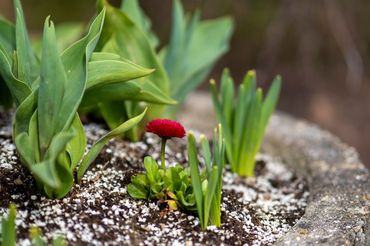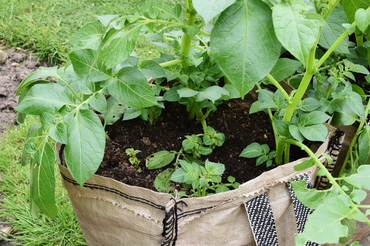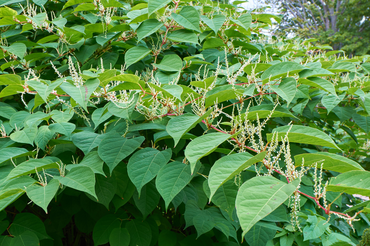
With daffodils in flowers and leaf buds swelling on branches, spring is definitely in the air again. Get your garden into shape for the year with our top gardening tips for March.
Top Gardening Tips For March
-
Now’s the time to plant your first early chitted potatoes. (You can also plant unchitted potatoes, but chitting them will give you a better harvest.) Plant onion sets, too, covering them with netting to stop birds from pulling them up.
-
Once the daffodils have finished flowering, deadhead them. Leave the foliage to die back naturally so that the plants can store enough food in their bulbs to produce next year’s blooms.
-
Dig up large clumps of snowdrop clumps while their leaves are still green and divide them into smaller clumps for replanting. This will encourage them to spread.
-
Choose a day when the grass is dry, and cut your lawn on a high setting.
-
In parts of the country with milder climates, you can start sowing seeds outdoors towards the end of March. Hardy annuals like Californian poppies, Nigella, cornflower and nasturtium can all be directly sown outdoors now, as can carrots, parsnips, radishes, and broad beans. If the ground is still frozen, sow them indoors in pots instead.
-
Sow tomato seeds and chillies indoors in pots, and put them in a greenhouse or warm sunny windowsill to germinate and grow.
-
Plant summer-flowering bulbs like Gladioli, Agapanthus, and Lilies in pots indoors, ready for planting out once the frosts are over.
-
If you haven’t pruned your bush Roses yet, do it now, cutting away all dead, damaged, and crossing branches, removing spindly growth and cutting the remaining stems down by a third to a half.
-
Prune mophead hydrangeas, cutting back last year’s flowering stems to the first strong buds below the dried flowerheads. Prune Fuchsia, too, cutting back last year’s flowering stems to one or two buds from the older woody growth.
-
Lift and divide big clumps of perennials like daylilies, Agapanthus and hostas. Lever fibrous clumps apart using two garden forks inserted back-to-back in a clump. Use a sharp knife or the cutting edge of a spade to divide woody roots. Dividing overgrown perennials will rejuvenate them and give you extra plants.
-
Feed Roses with general-purpose fertilizer and blueberries, Camellias, and Rhododendrons with ericaceous fertilizer.
-
Clear weeds from borders and dig compost or well-rotted stable manure into your vegetable beds to get ready for spring planting.
-
Put in plant supports now, while your plants are still small, and it’s easier to work around them. As the plants grow, they can be trained into the supports.
-
Get ready for summer by installing a water butt connected to a downpipe to collect the rainwater from your roof.
-
Top-dress shrubs in pots by removing the top 5cm (2in) of old compost and replacing it with fresh compost.
Visit our centre for tools, seeds, and all your gardening needs, and get your garden looking great this spring!




